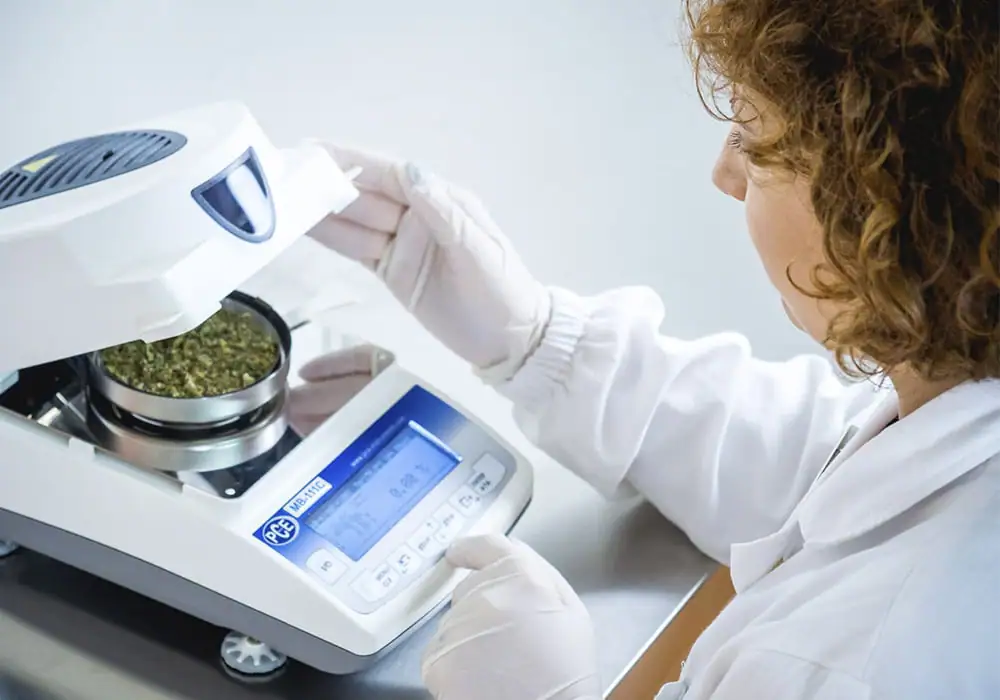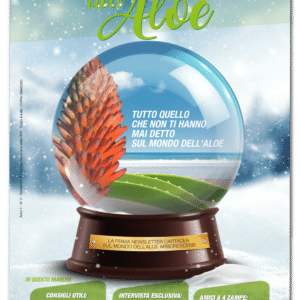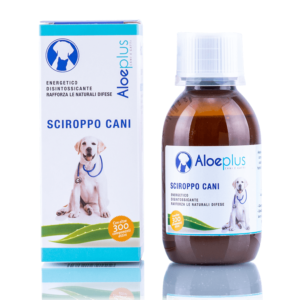In Aloe arborescens we will be able to identify more than 250 active ingredients and functional substances, which act in synergy and make it the queen of phytotherapeutic plants.
In the ALOEPLUS line® in each product we will have the powerful combination of Aloe arborescens and Carrot. Why this choice? Because the synergy between carrot and Aloe arborescens has a greater therapeutic action than the same components taken individually, in practice Aloe enhances even more its therapeutic action if combined with carrot. This mixture in 2006 obtained the Patent from the Ministry of Productive Activities as a “vegetable mixture with important therapeutic, energetic and cosmetic properties”.
Let’s analyze specifically the main and most important properties of Aloeplus and therefore the actions that act on the organism of dogs and cats.
Anti-inflammatory action*
The anti-inflammatory action of Aloe is, without a doubt, the most observed and documented property. Aloe has a calming and soothing action on inflamed and painful tissues, with an intensity equal to steroidal anti-inflammatories and with the advantage of not producing side effects.
The antiphlogistic activity of Aloe is manifested through three plant sterols: lupeol, beta sitosterol, and campesterol. The result is an inhibitory effect of prostaglandins type 2, and the synthesis of cholesterol in lymphocytes that would otherwise rush numerous to fight the invading agent, producing the typical enlarged and swollen appearance of an inflammation.
By means of Acemannan, on the other hand, the production of macrophages is developed through their ability to phagocyte or incorporate molecules or organisms incompatible with the correct metabolic functioning, tending to decrease the effects of evident swelling.
The intervention is also expanded by the help of the enzyme bradykinase, which enters the complex organic system of pain management acting in such a way as to inhibit the formation of kinins, including bradykinin and interleukin, molecules produced by the body precisely as a primary response to an imminent inflammation.
Immunomodulating action*
This action is carried out by glucomannans, a class of long-chain sugars derived from plants, which have been shown in clinical and laboratory studies to have a wide variety of protective and immunostimulating effects within the human body. In the study of different sources of this polymer it was found that Aloe arborescens plants contain the largest concentration of acetylated mannan existing in nature, which is also in the most active form among the available.
The mode of biological action of acemannan has been listed, which has been shown to have an excellent ability to normalize all the processes of damage to the organism and therefore contribute decisively and significantly to the increase in the functions of the immune system.
In the intestine, glucomannan acts as a powerful anti-inflammatory and neutralizer of many of the enzymes responsible for damaging the mucous wall; it works as a fire extinguisher, it sedates it. This happens thanks to a decrease in the holes on the intestinal wall and the decrease in the absorption of proteins that in turn stimulate allergic reactions of the body. Acemannan therefore exerts direct virucide, bactericidal and fungicidal properties, through which it can help the body in controlling the super-production of Candida Albicans and normal gastro-intestinal function can be restored.
Acemannan, assisted by anthraquinones, also stimulates intestinal mobility by helping the removal of allergenic proteins from the small intestine to the colon. All these reactions lead to a normalization of the functions and structure of the gastrointestinal wall and therefore stop the vicious circle of damage to the immune system. Acemannan plays, however, a remarkable direct action on the immune system, activating and stimulating macrophages, monocytes, antibodies and T cells.
Studies conducted in the laboratory have shown that acemannan acts as a bridge between foreign proteins, such as particles of a virus and macrophages, facilitating the ingestion of proteins by macrophages, for phagocytosis. Activation of this receptor site is a key component in increasing cell-mediated immunity deficient in FIV infections. It increases the number and activity of macrophages, killer T cells and monocytes. Antibodies forming beta cells in the pancreas are also increased and the spinal cord is protected from damage due to toxic chemicals. These different effects, while, at first glance, would seem variously extensive and without any relation, are instead due to a single and simple process at the level of the cell membrane.
Acemannan, a mucopolysaccharide, is a long-chain sugar that interacts with itself and the cell membrane. This results in an increase in the fluidity and permeability of the membrane allowing toxins to drain easily and nutrients to enter the cell just as easily. The result is an improved cellular metabolism and a global increase in energy production. The vicious cycle of poor digestion and cellular malnutrition is being broken. In this way acemannan normalizes the absorption of nutrients and increases the threshold of tolerance to allergenic foods. The immune system is now stronger, under control, and better prepared for a new attack.
Healing and re-epithelizing action*
An action generally complementary to the anti-inflammatory one is the facilitated healing and re-epithelialization. The reaction mechanisms, however, are very different. If in the response to inflammation we tend to create inhibitory reactions, in scarring we witness the opposite phenomenon, that is, the stimulation of cells used for the formation and repair of tissues. The resorption of a wound is favored by at least two factors. The first factor for which some active ingredients with high molecular weight, composed of long chains of a sugar, mannose, and forming glucomannans, stimulate the activity of macrophages. The growth of cells and tissues is promoted, together with the proliferation of fibroblasts, the precursors of epithelial cells. Glucomannan also interacts with particular receptors placed on the surface of cells assigned to the repair of injured or injured tissues. Finally, this polysaccharide, with its multifaceted properties, creates an increase in collagen synthesis and speeds up re-epithelialization. The second factor of healing a wound is to be found in the action of plant hormones, gibberellins and auxins, which are present in Aloe, stimulate cell reproduction.
Antibiotic action*
Aloe has an extraordinary natural antibiotic power. This hard and selective work is accomplished, irreproachably, by the different anthraquinone glycosides such as aloins and haloetic acid. In reality, under the supervision of acemannan that prepares tissues to accommodate anthraquinones, aloemodine and the bradykinase enzyme can safely carry out their antibiotic, bactericidal and germicidal activity thanks to their cytotoxicity expressed in a coordinated way, after the protection of the cytoplasm.
The immune system is thus involved in a fast reaction against external pathogenic attacks, producing more macrophages, interferon and interleukins.
Pain-relieving action*
The analgesic activity in Aloe is mainly provided by three different molecules, all three in some way correlated with the beneficial potential on the cell, of anthracenes and anthraquinones. To them an enzyme is added.
They are the ester of cinnamic acid, isobarbaloin and salicylic acid. The added enzyme is bradykinase. The ester is found in high concentrations in the essence of camphor and cinnamon and performs a cleansing action, given that its molecular structure closely resembles that of soaps, which are esters of fatty acids.
The second molecule is one of the bitter compounds of Aloe and the third is a natural anesthetic from weeping willow, similar to the well-known acetylsalicylic acid, or Aspirin.
To them is added the action carried out by the enzyme bradykinase. It stimulates the immune system, especially the increase in macrophages and becomes part of the complex pain system, in which it performs an analgesic action. Bradykinin, responsible for pain and post-traumatic swelling, called into question by lysosomal enzymes after a high loss of granulocyte macrophages, which have failed to block foreign bodies that have come into contact with our body. Used topically, Aloe and the bradykinase enzyme contained therein, is simultaneously a good pain-relieving and anti-inflammatory remedy.
These four compounds synergistically offer their valuable work by supporting the main actions carried out by acemannan, which manages the healing process in its entirety.
*This article is based on scientific, academic and clinical trials. It does not want to create false illusions and / or promise miraculous healings, each organism reacts differently and therefore the results can vary from animal to animal. In any case, it is advisable to consult your veterinarian.
– Bruce W.G.G. 1975. Medicinal properties in the Aloe. Excelsa 57-58
– Kodym, A., 1991. The main chemical components contained in fresh leaves and in a dry extract from three years old Aloe Arborescens Mill. grown in hothouses Pharmazie 46, 217-219
-Yamamoto, M., Masui, T,. Sugiyama, K., Yokota., Nagakomi, K., Nazakawa, H., 1991. Antiinflammatory actives constituents of Aloe Arborescens Miller
-Biochemical and Cellular Approach to Explore the Antiproliferative and Prodifferentiative Activity of Aloe Arborescens Leaf Extract
(Blanda Di Luccia,1 Nicola Manzo,1 Maria Vivo,1 Eugenio Galano,2 Angela Amoresano,2 Elvira Crescenzi,4 Alessandra Pollice,1 Raffaella Tudisco,3 Federico Infascelli3 and Viola Calabrò1)
1Department of Structural and Functional Biology, University of Naples ‘Federico II’, Naples, Italy
2Department of Organic Chemistry and Biochemistry, University of Naples ‘Federico II’, Naples, Italy
3Department of Zootechnical Sciences and Food Inspection, University of Naples ‘Federico II’, Naples, Italy
4Institute of Endocrinology and Experimental Oncology, CNR, via S. Pansini, 580131, Naples, Italy
-Brossant, J.Y., Ledeaut, J., Ralamboranto, L., Rakotovao, L.H. Solar, S., Gueguen, A., Coulanges, P., 1981. Immunostimulating properties of an extract isolated from Aloe vahombe. Archives Insitut Pasteur Madagascar 48, 11-34








Recent Comments